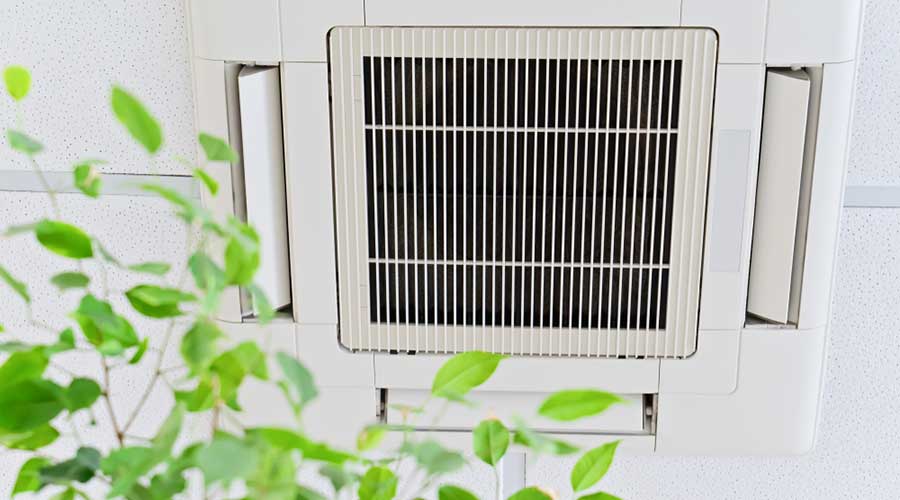The ongoing COVID-19 pandemic has caused a dilemma within facilities. Since the onset of the pandemic, healthcare facilities managers have been striving to improve their facilities’ indoor air quality (IAQ) but are still feeling the challenges of trying to implement new technologies. Because of this, managers often upgrade ventilations systems first because of uncertainties related to new technologies. While ventilation can improve IAQ, it can be a more expensive alternative.
“A widely available technology is importantly providing visibility to areas where improvements in indoor air quality are recommended,” says PJ Piper, CEO with Far UV Technologies. “CO₂ is produced when people breathe. The CO₂ concentration in an occupied indoor space indicates if the building’s air exchange balance is appropriate – that is, if the optimal amount of outside air is being mixed with air that has been circulating in the building. CO₂ monitors are now broadly accessible on Amazon or elsewhere and inexpensive and can indicate whether or not more air exchanges or equivalent air exchanges are needed to reduce the concentrations of viral load and risks of transmission of COVID, the flu or other airborne pathogens in our occupied spaces. Most people would be surprised to learn how many of their indoor environments, when fully occupied, exceed the ~1,000 ppm guidance that ASHRAE has established for healthy buildings.”
Besides ventilation, the CDC and ASHRAE recommend HEPA filters and ultraviolet (UV) light to improve IAQ. Despite getting the go ahead from these agencies, some managers are hesitant to use in-room UV systems due to a lack of familiarity with the technology’s safety, efficacy and cost advantages. Some of the hesitancy also stems from the transactional business model where it was harder to confirm where transmission had occurred on-site or the interest of only doing what others had already done.
“Given there has been little to no evidence of COVID transmission through HVAC systems, ductwork-based interventions may not provide much protection against pathogens like COVID which have been proven to spread primarily in the near air between people,” Piper says. “In-room UV alternatives overcome the intrinsic flow limitations with mechanical (fan)-based systems that result in inefficiencies and unwanted noise that increases with additional physical air exchanges. These UV solutions provide equivalent air exchanges autonomously and continuously removing human limitations of implementation or compliance.”
In-room UV systems are being implemented in healthcare facilities as managers become more familiar with the technology and its potential benefits. In addition, the solution can save smaller hospitals just as much money as larger facilities. For example, Piper says, using ventilation or HEPA filters can be as much as 13 times more expensive than a UV solution. When factoring in performance advantages and the maintenance, installation and energy costs, whole-room far UV can cost one-half or less than an upper room UV systems on a per eACH basis. Still, healthcare facilities have not increased air exchanges 20-25+ ACH to protect against the more infectious variants, increasing their equivalent ACH much higher and faster with UV than with alternative solutions. UV systems can still be installed if a facility has a HVAC system in order to achieve high eACH as well.
“While there was an initial rush to some of the older 254nm UV systems like ductwork-based implementations or robots for unoccupied rooms, more people gained awareness to the significant advantages of in-room UV systems, particularly as the airborne vector of transmission became clearer,” Piper says. “Whole room far UV systems have increasingly been utilized from defense applications up through the Pentagon to schools, to transportation systems and healthcare facilities and vehicles. With over 1,000 installations for over a year, there have been no reported cases of transmission despite several documented infected individuals entering into those spaces and working alongside other uninfected individuals, often unmasked and not social distanced.”
By utilizing both UV systems and face masks, facilities can provide healthier environments for patients and residents while minimizing potential staffing shortages. In addition, this allows operations to be more resilient as new variants occur.
“While users may already be morally and economically incentivized to adopt these technologies, it would not be surprising if the same public safety considerations that eventually led to the building codes requiring fire prevention solutions in the 1970s would lead to a similar building code requirements for minimum IAQ for healthy buildings being enacted in the near future,” says Piper says. “We suspect with the data and knowledge now being broadly available, most healthcare participants will voluntarily seek additional safety and cost savings versus waiting for regulatory requirements.”
Mackenna Moralez is the associate editor with the facilities market.

 Healthcare Is the New Retail
Healthcare Is the New Retail Bridgeway Behavioral Health Services Launches Campaign to Renovate Health Center
Bridgeway Behavioral Health Services Launches Campaign to Renovate Health Center Ground Broken for New North Dakota State Hospital
Ground Broken for New North Dakota State Hospital AI Usage for Healthcare Facilities
AI Usage for Healthcare Facilities Ground Broken on Pelican Valley Senior Living Modernization Project
Ground Broken on Pelican Valley Senior Living Modernization Project